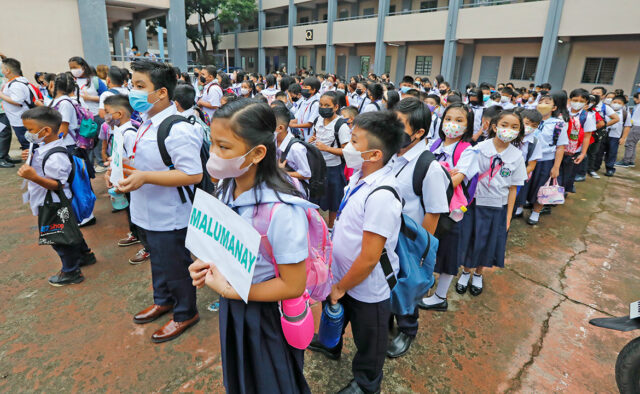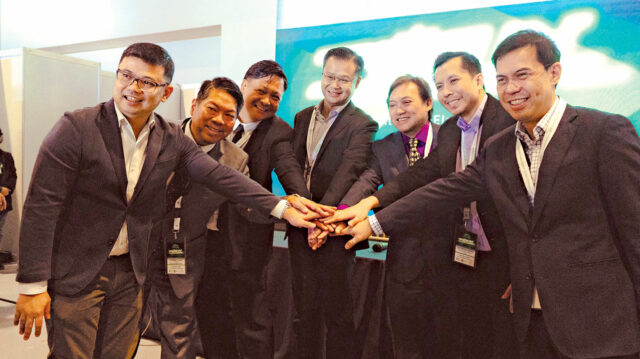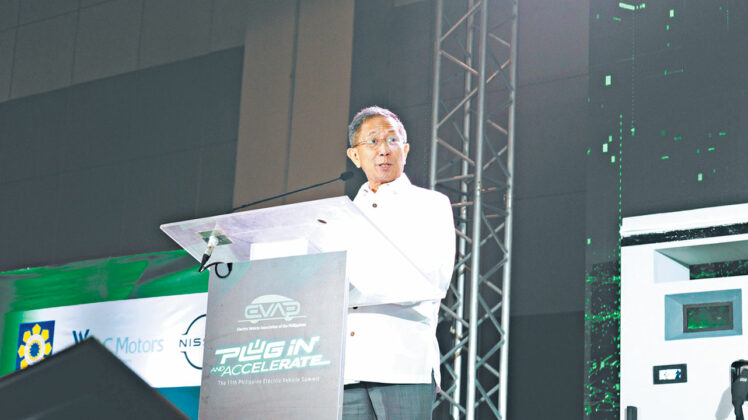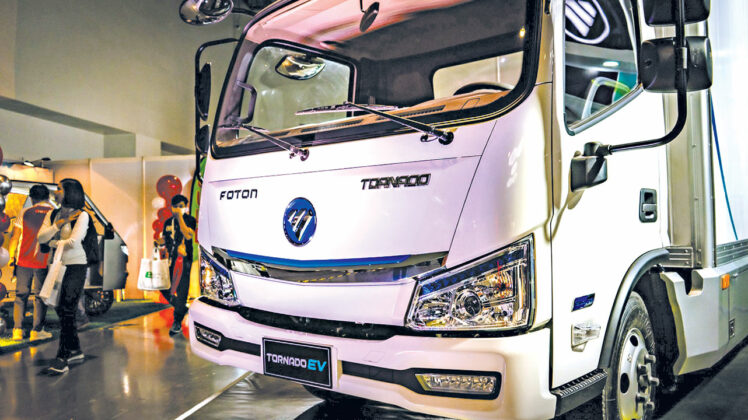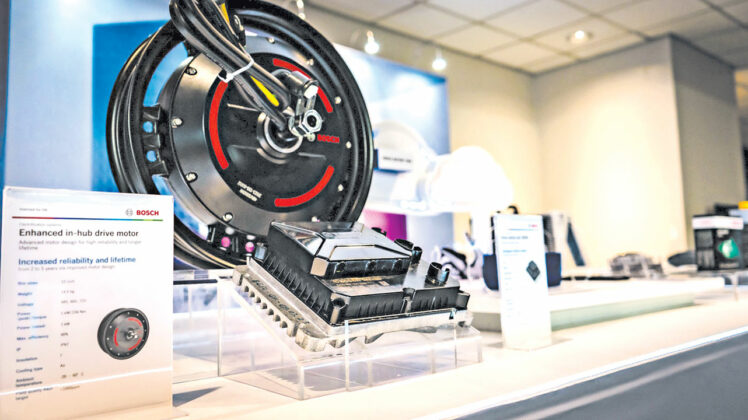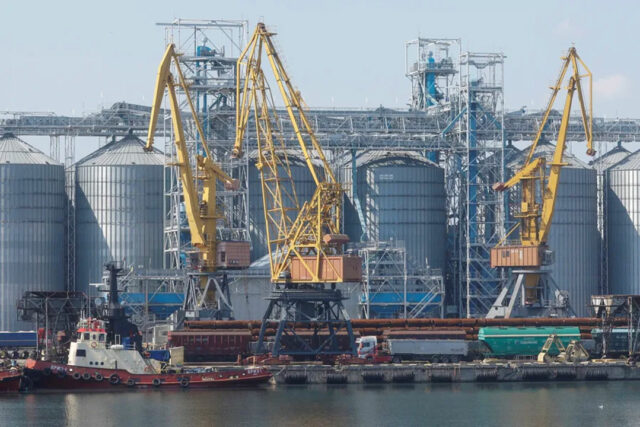Yes, they’re gaining more widespread acceptance, but the work is far from over
ELECTRIC VEHICLE Association of the Philippines (EVAP) Chairman Rommel Juan took his place at the resource persons’ table for the traditional Q&A with members of the media. He was late because he had just attended one of the ancillary events (an unveiling of a brand’s electrified vehicles) which happened at the same time.
Smiling, Mr. Juan later took the microphone, and expressed gratitude to everyone involved in making the show possible — and successful. He marveled at how things have changed since the first Philippine Electric Vehicle Summit (PEVS) press conference was held at the basketball court of Meralco’s headquarters in Pasig City many years ago.
For some time now, the country’s “biggest annual conference focused on promoting electric vehicles in the country” has been calling the huge SMX Convention Center Manila home. Based on this alone, one can already reckon the event’s growth trajectory over the years.
This may well be the narrative of the journey to electrification of mobility in the Philippines, too.
When it was but a pipe dream for many Filipinos, EVAP was slugging it out — trying to get the word out and lobbying for more favorable conditions to help open the EV floodgates.
Happily, as the 11th staging of the EVS commenced last month, it did so amid a myriad of positive changes in the EV scene. Legislation, executive fiat, and an undoubtedly more informed market are accelerating the pace of adoption.
That was exactly the theme of this year’s summit: “Plug in and Accelerate.”
For the longest time, we’ve often heard the local EV scene described as nascent. While that arguably still remains to be the case, there’s probably a better word that captures the current state of affairs: burgeoning. Battery electric vehicles used to be, with some exceptions, the sole domain of two ends of the spectrum: novel public utility examples (e-trikes and e-jeepneys), and luxury marques.
But while the majority of car buyers remain content and comfortable with an internal combustion engine rumbling underneath the hood, more are finding themselves open to going electric or, at least, electrified. However, the onus remains firmly upon the state and its lawmakers to ensure the viability of that choice.
Nonetheless, EVAP anticipates the country to have 6.6 million electric vehicles by 2030, and EVAP President Edmund Araga is confident about reaching this milestone. “We’re very optimistic that we can achieve that in line with the support of the government’s CREVI (Comprehensive Roadmap for the Electric Vehicle Industry) and EVIS (Electric Vehicle Industry Strategies) which will be launched soon. With this, we have to consider not only four wheels but the two-wheel sector, as more Filipinos (can afford the latter).”
Even as more OEMs are joining the local EV fray, Mr. Araga said that EVAP aspires for a slice of the production action. “We’re looking at local manufacturing for two-wheeled EVs, and that will be a game-changer. Malaki ang market (The market is huge).”
These vehicles, he continued, are a great business tool, especially for small and medium enterprises. Having said that, the Department of Trade and Industry (DTI) is said to be rolling out a strategy to spur the local production of e-jeepneys which, in turn, can fill the gap to be ostensibly left by the traditional jeepneys as they are phased out.
At the start of the year, President Ferdinand “Bongbong” Marcos, Jr., through Executive Order No. 12, approved the removal of tariff on imported EVs and the reduction of taxes (down to one percent from three percent) on their parts and components. The move is seen as a much-needed leg up for the segment, rendering the switch to electrified more palatable. In the order, the transport sector was identified as one of the largest sources of air pollution and energy-related greenhouse gas emissions in the country at 34%, with road transportation accounting for 80% of these.
“Velocity” asked Senator Sherwin Gatchalian during the Q&A session about what’s next after the expiry of the excise tax break. Will additional legislation be needed to continue to shore up the EV sector here? He explained that there are three components to consider: value-added taxes, excise tax, and tariffs. “The VAT was never removed, and the excise tax has a limited time period. The theory there is that, at a certain point in time, EVs will become as (price) competitive as an ICE (internal combustion engine) vehicle. So, there’s no need to remove the excise tax anymore.”
As for tariffs? “Tariffs were reduced by executive fiat,” the senator replied. “(These can be removed) depending on the situation… But after the invasion in Ukraine (and) we saw a spike in fuel prices, the executive decided to remove tariffs so that importation of EVs will be competitive. In other words, tariffs are within the ambit of the executive side, excise taxes are within the ambit of the legislative side. In other words, if we see that electric vehicles are still not competitive at a certain point, we can extend the deletion of excise tax.”
One recurring question that hangs like a cloud over our EV aspirations concerns the exorbitant electricity rates in the country — known to be one of the costliest in the region. Department of Energy (DoE) Director Patrick Aquino posited, “To be clear, you’ve always heard government explain that the function of our electricity rates is that it’s deregulated. No portion of it receives government funding, and pre-EPIRA (Electric Power Industry Reform Act), we were heavily spending on electricity.
“The choice actually, which was wisely done by our legislators, is to free up those resources so we could plow them back to social services and education. Notwithstanding the current electricity rates that we have, you will see that it’s still more cost-effective to run an electric vehicle on a per-kilowatt, per-kilometer basis when you compare to a per-liter basis.”
By Mr. Aquino’s reckoning, the average per-kilometer cost of running an EV comes out to just under P2. “When you compare that to a gasoline or diesel vehicle, it’s four or five pesos or higher. The reference rates there are around P11.50 per kilowatt-hour, P65 for diesel, and P70 for gasoline. The cost advantage is there, so government has been doing additional levers and the excise tax is on the table already, it has been covered by TRAIN (Tax Reform for Acceleration and Inclusion) and EVIDA (Electric Vehicle Industry Development Act). On the part of the executive, it’s the import tariff suspension.”
The key enticement, along with a greener footprint, is a simple calculus: “It’s still cheaper to operate electric vehicles,” he said.
The DoE has marching orders to shift its focus to renewable energy, which is more indigenous. “That’s why we’ve set out on an ambitious target of having at least 35% of our power generation come from renewable energy by 2030 and, by 2040 onwards, at least 50%. How do we do this? We have programs on solar PV (photovoltaic cells, which convert sunlight into electricity), streamlining (our) processes, and (look at) ways to generate energy,” he reported.
Mr. Aquino maintained that the DoE is working with industry stakeholders and partners to lay down the foundation for EVs. Aside from the high cost of electricity, the power grid is also beset with supply problems. To be honest, that will only be exacerbated if EVs continue to grow, and more demand is asked of the grid.
“One of the biggest challenges is if we will roll out direct current fast-charging infrastructure, that’s the one with the biggest dent in terms of electricity consumption,” admitted the official. “There are also some technical considerations once we deploy them, because there has to be upgrades in the transformers, the lines. That’s what we’re working on.”
There’s a behavioral aspect, too. EV owners need to be cognizant of responsible charging. If charging is done at home and at night, there won’t be a need or pressure to have high-capacity DC chargers scattered around the metropolis.
For Sen. Gatchalian though, the Philippines can’t do without an EV charging infrastructure. “Obviously, you can charge overnight,” he said. “But what if you go to the mall, you go out of town? What if you go to work? Then that becomes a problem. There’s a reason why, when we crafted the EVIDA law, we assigned the Department of Energy as the lead agency, because we foresaw that the problem with the entire EV industry will be charging stations, and the infrastructure. Since the DoE has supervisory authority over all utilities… they can prescribe policies that will hasten the deployment of charging stations through the country.”
Mr. Aquino reassured, “By next year, we will be integrating these additional (EV) requirements in the power distribution development plan, particularly as more of our public utility transport sector shifts to this. Definitely, our public transport sector will need DC fast charging to sustain operations.”
Two- and three-wheelers are, perhaps for the near term, still expected to comprise the bulk of electric vehicles in the Philippines, owing to their utility and pricing. All told though, the number is growing. EVAP reported that EV registrations in the first half of 2023 totaled around 1,200 — more than the total of the previous two years.
For now though, hybrid electric vehicles (HEVs) are proving to be the low-hanging fruit. For many car buyers, this is their first foray into electric — in no small part because of concerns of range, pricing, and the aforementioned charging infrastructure.
When “Velocity” asked Mr. Araga for the ways to further accelerate the pace of EV adoption within the ambit of the law, he said it’s about taking advantage of legislation and reliefs already in place. “Implementation makes it more possible for us to grow. Rules and regulations are there already, along with standards,” he stressed. “It’s up to stakeholders and the government to work together on the implementation… On the manufacturing side, I’m still vocal and optimistic that opportunities for SMEs are here in EVs. They’re very easy to assemble, with only fewer parts and components. I would like to push for localization.”
Joined EVAP Chairman Emeritus Ferdi Raquelsantos, “Education is something we need to provide for drivers and EV owners.”
Mr. Juan shared that we can learn much from our ASEAN neighbors who are further along in their EV journeys. “We have been actively going around the region because of AFEVA (Asian Federation of Electric Vehicle Associations), and you know with every visit we learn so much, medyo nakaka-sad (it’s a bit sad) because we can see they’re ahead, but we’re able to benchmark ourselves.
“If you go to Thailand, the taxis are electric. Malaysia produces its own electric motorcycles, Laos has its own local Uber, and EVs grew last year because they ran out of petrol last year — plus electricity in Laos is so cheap because of the hydropower dams in the Mekong delta. If you go to Indonesia… they stopped importing nickel because they want to manufacture their own batteries locally. These are things we can learn from.”
Regardless, Mr. Juan did underscore all the progress that has been made here. “We have gone so far with our journey in EVs,” he declared, almost wistfully.
But, of course, we can go a lot further.



